Q/As on Auto Leasing, Homemade Detergent, Silver, and MORE!
You should see my email inbox. Yikes! It’s overflowing with reader questions, tips, stories, feedback, rebuttals, and all kinds of love from you, my dear readers. In this post, I’m making a tiny dent in the pile with these responses to a handful of your questions on auto leasing, homemade laundry detergent, and more.
Here is a quick summary of the questions answered in today’s post. You can click on one to jump straight to it or just scroll down for all.
Contents
-
Lease or buy a car?
-
Which is better? Powder or liquid laundry detergent?
-
Can you put silver in the dishwasher?
-
Is my washer repairman right?
-
Daughter not going to college—now what?
Q1: Help! Should we lease or buy a new car?
Dear Cheapskate: My wife and I are disagreeing. I want to lease a new car now because ours is old and paying for repairs is like flushing money down the drain. She wants to keep it until we can buy a better car. I hate car trouble and think peace of mind is something to be considered. I’m sure we can afford the payment, but she’s not. What should we do? James
Dear James: I’d rather shove toothpicks under my fingernails than ever lease a new car again, which is another story, but enough about me.
Here’s my best advice: Do whatever you must to keep the old car running for now.
Then, for the next 12 months, live as though you are making $400 monthly lease payments—but make those payments to yourselves. Don’t even think about being late, just as if you were under a stern leasing contract.
At the end of a year will have two things: A good idea of your comfort zone for big lease payments and $4,800 cash. Now you’ve got options.
1) You can sell the clunker and together with the money buy a used car or 2) You can make a down payment on a newer car.
To me buying a car is far better than jumping into a lease where you will spend a fortune and have nothing, not even a car, to show for it at the end of the lease period.
Thanks for writing and for calling me “Cheapskate.” I love that because, as you may know, I used to be a world-class spendthrift and that nearly ruined my life.
Learning to live frugally turned my life around so I wear that cheapskate moniker with pride and joy.
Q2: Which detergent is best, powdered or liquid?
Dear Mary: I’m so confused about laundry products, particularly detergents. Are powders better than liquid? Is the word “ultra” just hype? Thanks. Cindy
Dear Cindy: Here’s the scoop on laundry detergent: Typically the word “ultra” means the product has been concentrated to fit into a smaller box. The problem is unless you read the label and carefully measure and experiment to find the least amount that works for you, you’ll probably dump in the same amount you have in the past. Not good.
A product that has fabric softener added isn’t going to clean or soften as well but generally is cheaper than buying two different products if you insist on using laundry softeners.
If a product says it has more stain fighters, it contains enzymes to dissolve stains better, but you’ll still have to pretreat heavy stains. Detergents with enzymes usually cost more than those without.
Typically, liquids detergents are more expensive and work better on greasy stains but the cheaper powdered detergents are better on clay dirt and mud stains.
Both liquid detergent and liquid bleach will get a boost and work better if you add one-half cup of baking soda to the wash cycle, which means it’s possible you’ll be able to use less detergent. This is only cost-effective when your soda products are less per ounce than the detergent.
And now for my super-duper laundry detergent savings secret: I make my own homemade laundry detergent. Seriously. And it’s so cheap—about 5 cents per wash load. It has no perfumes or mystery ingredients and works better than any commercial laundry products I’ve purchased in the past.
Give it a try. I think you are going to be pleasantly surprised!
Q3: Can you put silver in the dishwasher?
Dear Mary: I have a set of silver flatware that I use daily. I notice that after a few times through a normal cycle, the pieces become very tarnished. It is not a particularly good set, just a nice set of flatware for daily use. Can you put silver in the dishwasher? Do you think that the dishwashing detergent is tarnishing the silver? Anne
Dear Anne: Yes, your silver plate or sterling silver pieces can go in the dishwasher and come out beautiful as long as you follow a few specific guidelines.
Case in point: One of my favorite things is a small silverplate pie server. I love it for its size and just the way it feels in my hand. I use it daily and it goes in the dishwasher every evening—by itself in its own little compartment so that it is not touching any other type of metal. Since I inherited it many years ago I have done nothing to it but use it, clean it and enjoy it.
As for your flatware, I’m going to guess that what you see is not tarnish but rather a reaction that occurs when silver comes in contact with other types of metal in the dishwashing process.
First, it’s important to know that when it comes to silver, cleaning and polishing are not the same things. Polishing should be a very occasional activity while cleaning is something you do to your silver after every meal. The dishwasher is an excellent way to take care of cleaning.
Tarnish is the result when sulfur in the air reacts with silver. If you have silver pieces that are very tarnished, you need to give them a good polish. Flitz Polish and Hagerty Silversmith’s Spray Polish are both highly regarded for fine silver care. Once polished, frequent use is the best way to prevent tarnish build-up.
Here are my house rules for how to clean silver (silverplate or sterling) in the dishwasher:
Rule 1
Only solid flatware and pieces in the dishwasher. That means no pearl handles, items with glue joints or weighted/reinforced items.
Rule 2
Rinse off immediately after use. Don’t let food sit on silver as it may cause corrosion or pitting.
Rule 3
Don’t let the silver pieces touch any other type of metal, including stainless, which will leave marks on your silver that are very difficult to remove. (It will require a good silver polish like those mentioned above and a lot of elbow grease.) You can put silver in the same dishwasher load as stainless, just in different flatware compartments. Never allow the two materials to come into direct contact—do not allow them to touch.
Rule 4
When washing silver in the dishwasher, stick with the normal or delicate cycle, not heavy-duty scrubber or high-temp sanitizing type options.
Rule 5
Do not use automatic dishwasher detergent that contains lemon, citrus or phosphates when washing silver. Cascade Complete is an excellent choice as it is phosphate-free with no lemon or citrus added. Cascade Complete ingredients: soda ash, sodium silicate, and sodium percarbonate.
Now that the silver is clean, use it and enjoy it!
Q4: Should I stop using homemade laundry detergent?
Dear Mary: Today a repairman came to put a new part in my top-loading HE washing machine. He saw soap residue on the inside and told me I was using way too much detergent. Also, he didn’t like that I was using a homemade detergent that contains Dawn liquid.
He said borax should never be used for laundry in modern washing machines. Mine is 10 years old. He also said dish detergents, especially Dawn, should never be used because they don’t rinse out completely. That leaves soap residue which becomes a medium for mold and microbial growth.
Modern detergents, he said, should be used at the rate of one tablespoon per load. The water level should be medium, large at the highest, and never the super or plus level I often used. That leads to spill over which results in soap residue in various unreachable parts of the machine (unreachable unless you take the machine apart, as he did).
He showed me all the mostly dried residue, which he cleaned and vacuumed out before putting the machine back together.
He also recommended a second rinse to get rid of soap residue. I had been using only one rinse on most loads.
And he recommended a product called Affresh, which is supposed to clean out the residue.
He says you can tell if you’re using too much detergent or the wrong kind of detergent by filling the tub with water, adding nothing and noticing if there are suds in the water.
Now I’m flummoxed as to whether or not I should continue to use your washing machine detergent recipe.
Thanks for any advice you can give on the subject. Jean
Dear Jean: Your repairman is spot on with his recommendation of only a small amount of detergent in a top-loading HE washer. Using too much of any product in any washing machine is not good for it and it’s not good for your laundry items either. Detergent left in clothes, towels, and linens will make them stiff, scratchy and stinky. So whatever product you use, you need to measure carefully, erring on the side of too little, not too much.
I am curious as to why a manufacturer would create a super or plus level if using it is bad for the machine. But I’ll leave that part up to you. I guess I would stop using it for the reasons he mentioned.
I do take issue with some of the information he gave you. Dawn is a safe product for clothes washing provided you are not using too much. One to 2 tablespoons of our homemade detergent in a front-loading HE washing machine is absolutely sufficient and safe to use. So is borax (I get letters from readers saying that borax will ruin your machine, but I can find no credible evidence for this statement, nor for using Dawn).
As for his recommendation for Affresh, there are many commercial products out there for washer cleaning. Curiously, many manufacturers, such as General Electric (I currently have GE stackable washer and steam dryer and love them to bits), prescribe chlorine bleach for the cleaning cycle, together with exact instructions in the owner manual for how to perform this clean once every month, which I do religiously.
I regularly use the second rinse option along with a bit of white vinegar to make sure all detergent is getting removed, leaving clothes soft and fluffy without any softening products.
So there you go. Who can you believe? I guess in the end you must go with your heart. As for me, I’m sticking with the homemade laundry detergent recipe. It’s better than anything I’ve ever purchased and I’ve been using it for many years. I haven’t seen a washing machine repairman in more than 30 years.
Thanks for writing, it was great to hear from you.
Q5: What happens to our 529 Plan money now that our daughter won’t be going to college?
Dear Mary: We’ve been putting money in a 529 plan for our daughter’s college education for the past several years. She recently told us she wants to attend beauty school, instead. Now that the surprise has worn off, we’re concerned about penalties when we withdraw the money. How much will we lose, and is there any way to avoid it? Rebecca
Dear Rebecca: I’ve got great news for you! That 529 plan money can be used at any accredited trade or vocational school—not only colleges and universities—to pay for tuition, room, board, fees, books, and supplies. If you have more in the account than the total cost of the vocational training and related costs, you can withdraw the balance.
Federal law imposes a 10 percent penalty on earnings for non-qualified distributions. This means that you will get back 100 percent of your principal and 90 percent of your earnings.
Another option is to change the beneficiary to another child or qualifying family member to keep the account going and avoid (or at least delay) taking non-qualified withdrawals if your daughter’s education doesn’t require those funds. Your particular fund may have additional provisions, so be sure to check with the fund manager.
Anyone can learn more about 529 college savings plans at Saving For College.
Everyday Cheapskate participates in the Amazon Services LLC Associates Program, an affiliate advertising program designed to provide a means for us to earn from qualifying purchases, at no cost to you.
More from Everyday Cheapskate
Please keep your comments positive, encouraging, helpful, brief,
and on-topic in keeping with EC Commenting Guidelines
Last update on 2024-04-26 / Affiliate links / Images from Amazon Product Advertising API

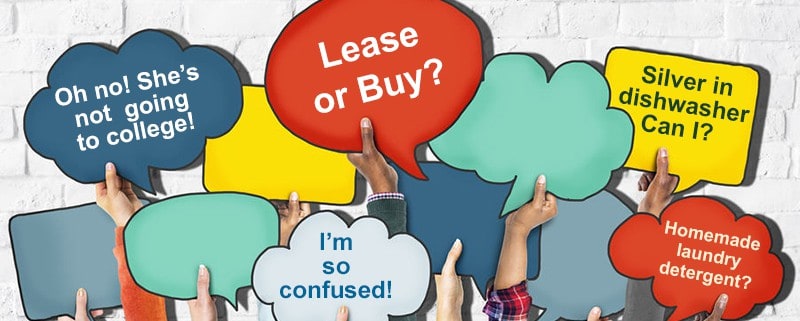

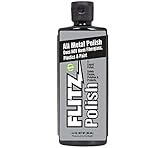


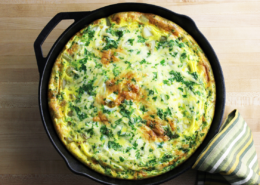
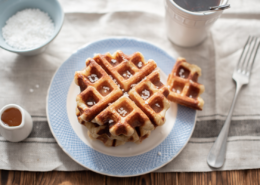

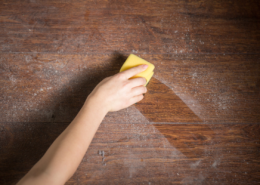







My friend loaned me her steam mop and I found it to be excellent for cleaning my tile floor. Since it is 7 years old, it is no longer available. Which one do you recommend?
My Sears Kenmore HE front loader manual (over 10 years old) recommends bleach as well, and the cleaning procedure is in the manual to do it myself.